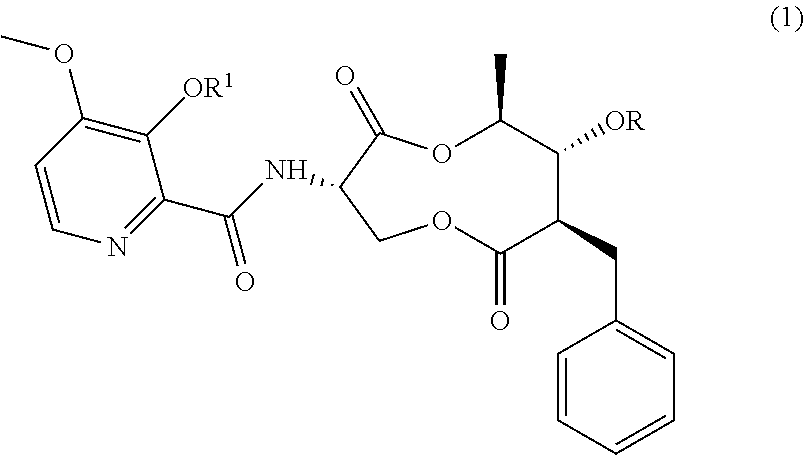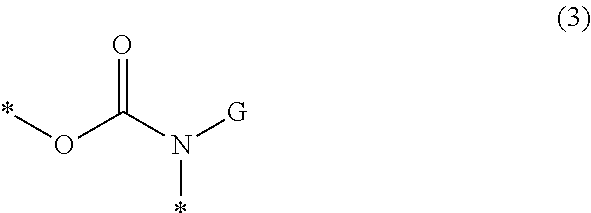Uk-2 biosynthetic gene and method for improving uk-2 productivity using the same
a biosynthetic gene and uk-2 technology, applied in biocide, peptides, organic chemistry, etc., can solve the problems of inability to perform gene recombination, inability to improve productivity, and inability to transform using the uk-2 biosynthetic gene, etc., to achieve high uk-2 productivity, low cost, and determine uk-2 productivity
- Summary
- Abstract
- Description
- Claims
- Application Information
AI Technical Summary
Benefits of technology
Problems solved by technology
Method used
Image
Examples
example 1
[0119]To isolate genes necessary for biosynthesis of UK-2, first, the genomic DNA library of Streptoverticillium sp. 3-7 capable of producing UK-2 was prepared by a method described below.
[0120]Streptoverticillium sp. 3-7 was inoculated into 50 ml of modified YEME (0.3% Difco yeast extract, 0.5% Difco bacto peptone, 0.3% Oxoid malt extract, 3.0% sucrose, 1.0% glucose, 5 mmol / L MgCl2.6H2O) and shake-cultured at 220 rpm at 30° C. for 18 hours. After the culturing was complete, the bacterial cells were collected by centrifugation at 7500 rpm for 10 minutes. From the bacterial cells thus obtained, the genomic DNA was prepared employing the salting out method [see “Practical Streptomyces Genetics,” The John Innes Foundation, (UK), Norwich, 2000].
[0121]The obtained genomic DNA was partially digested with a restriction enzyme MboI, and then treated with alkaline phosphatase to dephosphorylate the terminal of the DNA. This DNA fragment was ligated to a commercially available cosmid vector S...
example 2
[0122]Based on the genomic DNA prepared by the method described in Example 1, construction of the mate-pair library for Roche GS FLX Titanium sequencer was entrusted to Genaris, Inc. Then, this sequencer was used to determine the sequence. Separately from this, based on the genomic DNA, the fragment library for this sequencer was constructed. Then, this sequencer was used to determine the sequence. The sequence obtained from the mate-pair library and the sequence obtained from the fragment library were co-assembed together to obtain the contig sequence and the scaffold sequence.
[0123]UK-2 has a characteristic 3-hydroxypicolinic acid skeleton. Meanwhile, virginiamycin also has a hydroxypicolinic acid skeleton. Two genes (visA, visB) involved in the biosynthesis of virginiamycin have been disclosed (see Namwat W., et al, Journal of Bacteriology, September 2002, vol. 184, no. 17, pp. 4811 to 4818). Thus, a homology analysis was conducted between the amino acid sequence of the proteins ...
example 3
[0126]A portion of the sequence of ORF5 located upstream of the UK-2 biosynthetic genes was used as a probe for screening of the genomic DNA library prepared in Example 1, and prepared by PCR as described below.
[0127]PCR was carried out using the genomic DNA described in Example 1 as a template and oligo DNAs of visA′-F: 5′-GGGGCAGCCTGCTCGGCGAG-3′ (SEQ ID NO: 36) and visA′-R: 5′-GGTGAGCTCCCCGATCAGGG-3′ (SEQ ID NO: 37) as primers. The PCR was performed using LA Taq DNA polymerase (manufactured by Takara Bio Inc.) as a DNA polymerase and PERKIN ELMER GeneAmp PCR System 9700. The amount of the reaction solution was adjusted to 50 μl by addition of: 0.5 μl (corresponding to 0.5 μg in amount) of the genomic DNA, 25 μl of a buffer for two-fold concentration reaction accompanying the enzyme, 2.5 μl of a DMSO solution, 5 μl of a 2.5-mM dNTP solution, 0.25 μl of each of the primers whose concentration was adjusted to 100 pmol / μl, 0.3 μl of the enzyme, and 16.2 μl of sterilized water. The rea...
PUM
| Property | Measurement | Unit |
|---|---|---|
| Fraction | aaaaa | aaaaa |
| Strain point | aaaaa | aaaaa |
Abstract
Description
Claims
Application Information
 Login to View More
Login to View More - R&D
- Intellectual Property
- Life Sciences
- Materials
- Tech Scout
- Unparalleled Data Quality
- Higher Quality Content
- 60% Fewer Hallucinations
Browse by: Latest US Patents, China's latest patents, Technical Efficacy Thesaurus, Application Domain, Technology Topic, Popular Technical Reports.
© 2025 PatSnap. All rights reserved.Legal|Privacy policy|Modern Slavery Act Transparency Statement|Sitemap|About US| Contact US: help@patsnap.com



